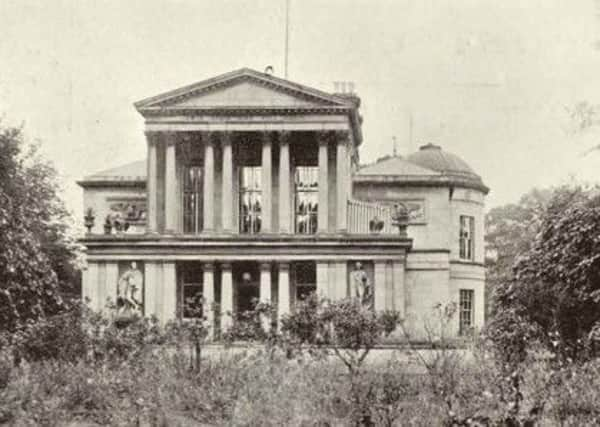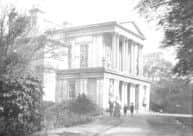Lost Edinburgh: Falcon Hall


Falcon Hall stood on 18 acres of ground in central Morningside between Newbattle Terrace and Canaan Lane. When it was built in 1780, the area would have looked very different to how it does today. Morningside at that time was on the extreme outskirts of the city, an enclave for the fabulously wealthy (as it still is in certain parts). You only lived out here if you could afford the coach fare – or your own coach.
CONNECT WITH THE SCOTSMAN
• Subscribe to our daily newsletter (requires registration) and get the latest news, sport and business headlines delivered to your inbox every morning


Advertisement
Hide AdThis was a time in Edinburgh’s history which saw a boom in the fortunes of the upper classes, and a growing number of large villas began to pop up, particularly in the south of the city. Suffice to say that the area wasn’t exactly short of grand residences. Falcon Hall, however, was a mansion of empirical stature.
History
The property was first built as Morningside Lodge in 1780 by Edinburgh hosier and future Lord Provost, William Coulter, and stood in what was then the Canaan Estate.
Following 1810 and Coulter’s death, the house was purchased by East India Company merchant, Andrew Falconar, who with the help of architect Thomas Hamilton, transformed Morningside Lodge into the self-titled Falcon Hall, adding a fine neoclassical façade in the process. Hamilton was also responsible for the hall’s distinctive gates which stood directly opposite the Morningside School. Featuring elaborately-styled wrought iron and stone piers – each surmounted by a large stone falcon, they were a magnificent sight to behold. Life sized statues of Nelson and Wellington - both immensely popular figures of the era – flanked the main entrance to the house itself. Hamilton’s interior included a handsome bronze-railed staircase which led to a most opulent reception area featuring a spectacular domed ceiling. It was undoubtedly one of the finest addresses in the city.
Changing fortunes
As Morningside began to change and develop over the course of the 19th century, so did the fortunes of Falcon Hall. Its gate pillars, falcons et al, were removed in 1874 and repositioned on the slopes of Corstorphine Hill where the formed the entrance to Edinburgh Zoo. After 1887 the last of the family owning the house died, and it lay empty for a while before reappearing as a boarding school and ladies’ college. Latterly the manse was owned by Dr John G. Bartholomew, an eminent cartographer and owner of the famous Bartholomew map making firm.
Demolition
Sadly, by the Edwardian era, upkeep of the estate was proving difficult, and to the great regret of many a Morningside resident, Falcon Hall and its estate were sold. The mansion was demolished in 1909. Only its magnificent portico entrance and staircase still exist. Both were moved by Dr Bartholomew to grace the premises of his firm on Duncan Street.
Falcon Hall is remembered in Morningside today by the names of streets and modern blocks of flats which have since been built on the estate.
SEE ALSO:
SCOTSMAN TABLET AND IPHONE APPS